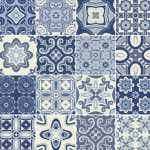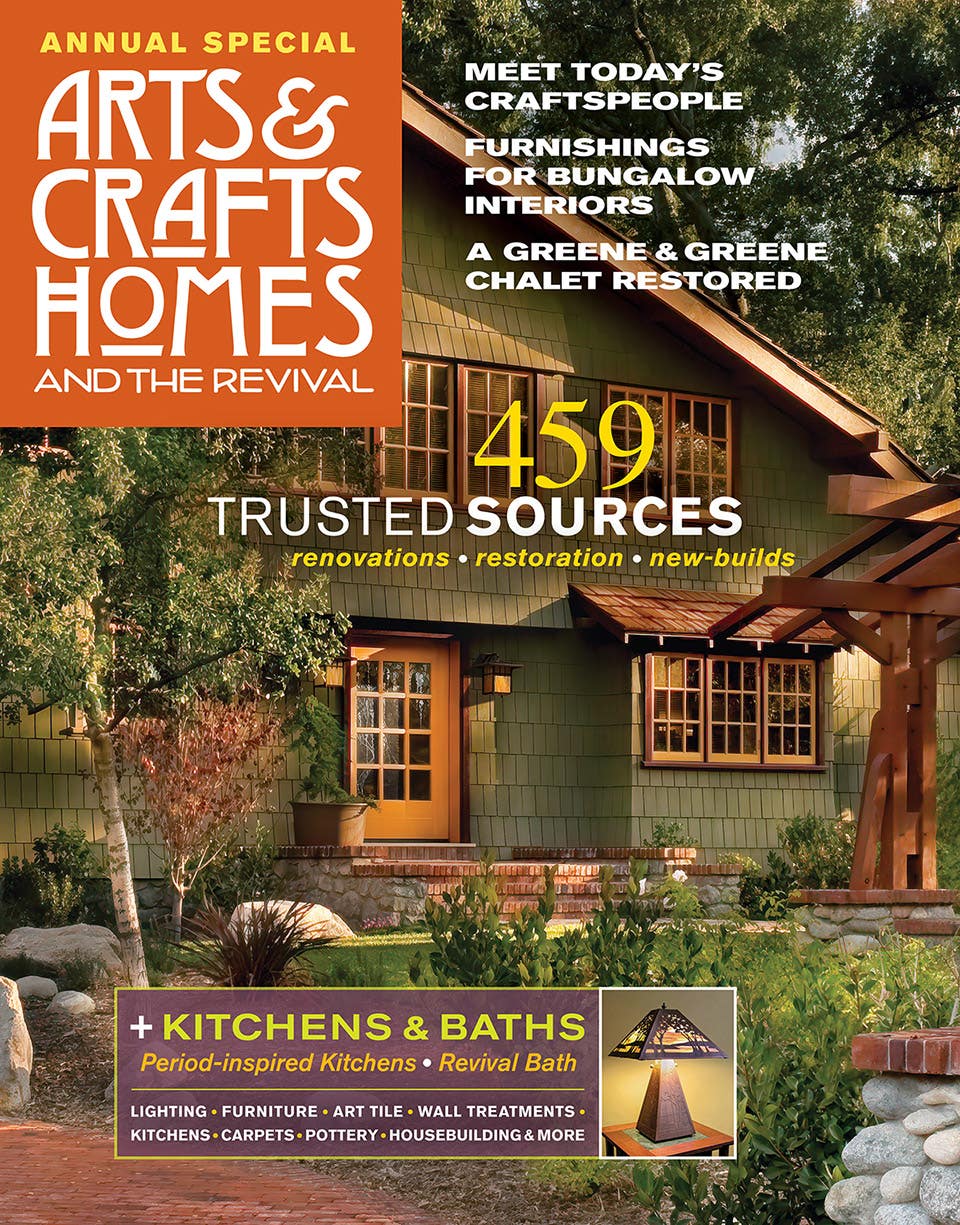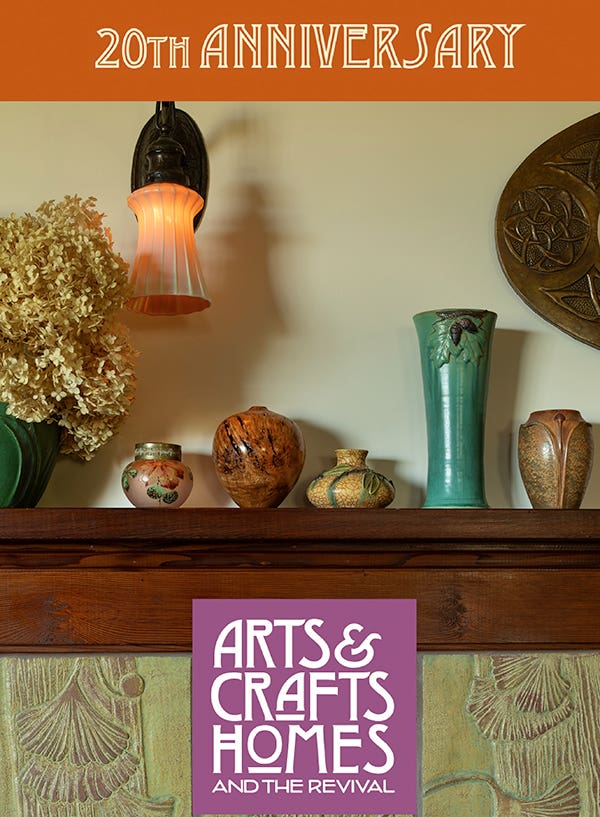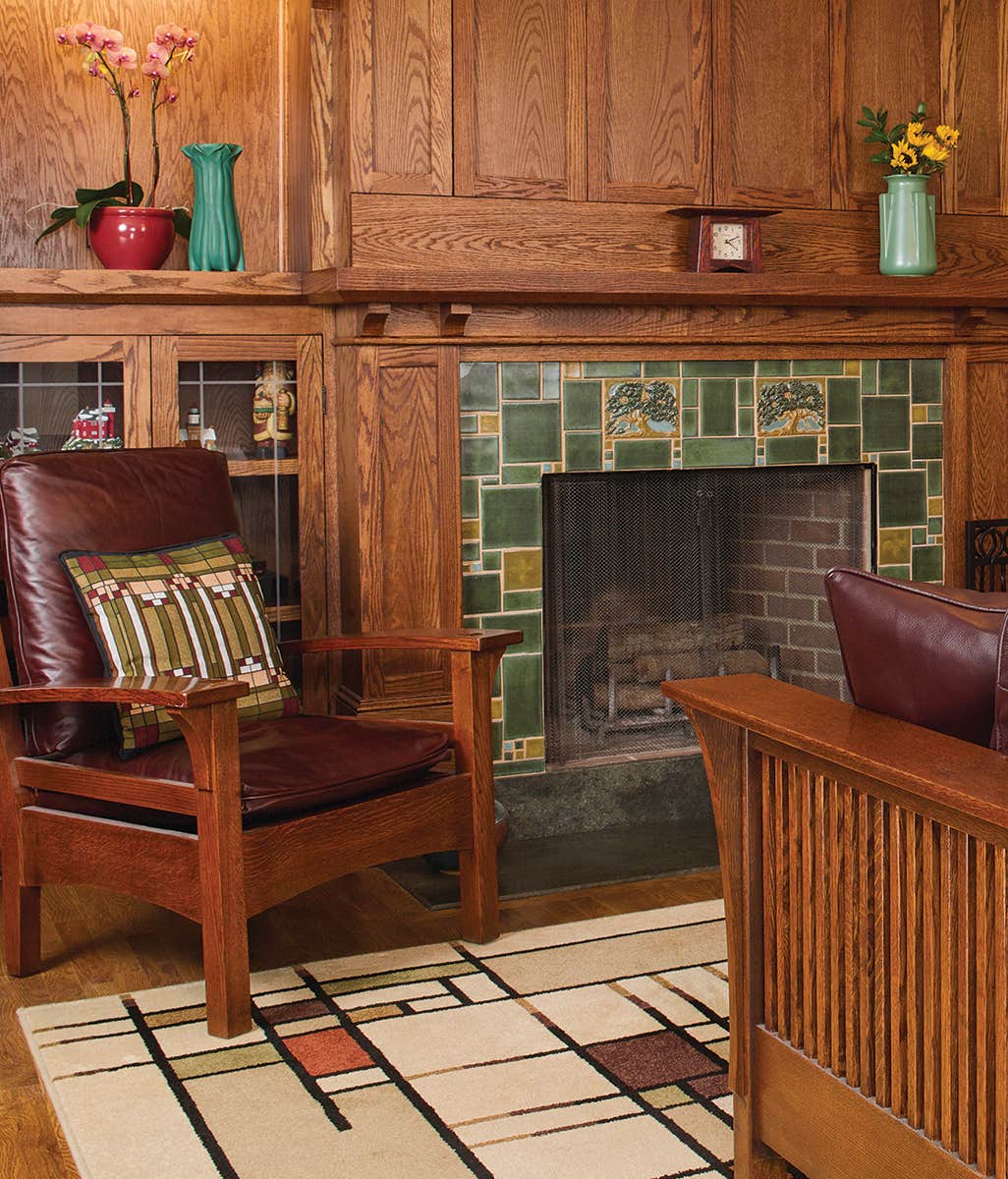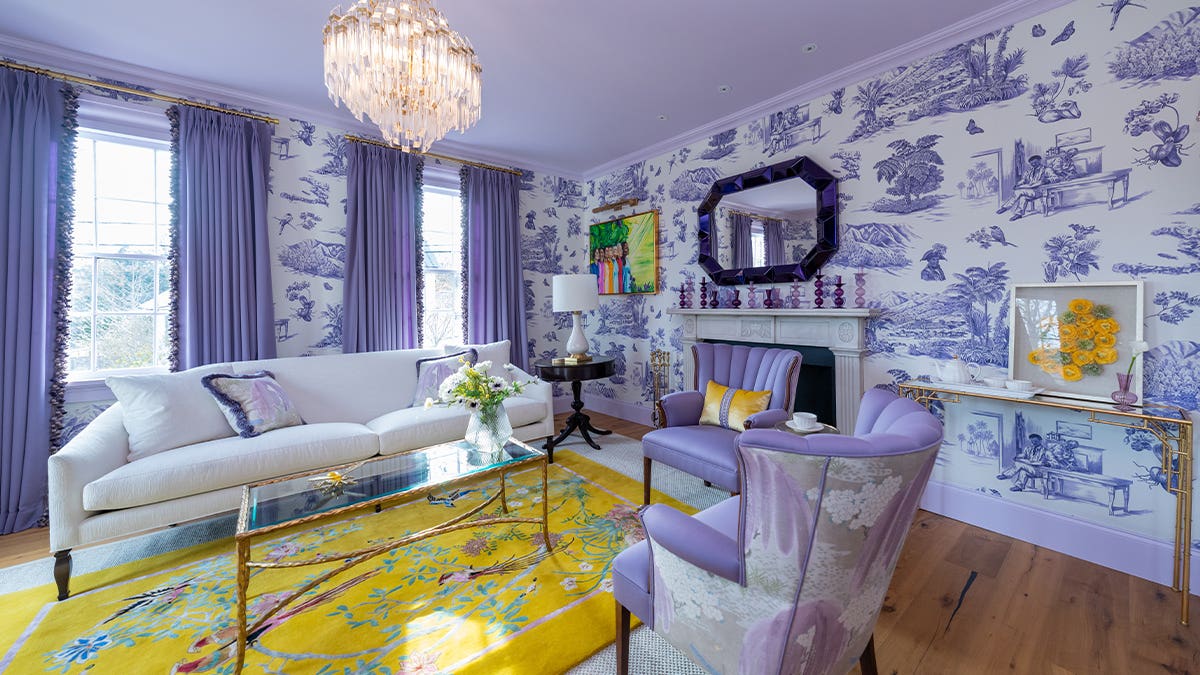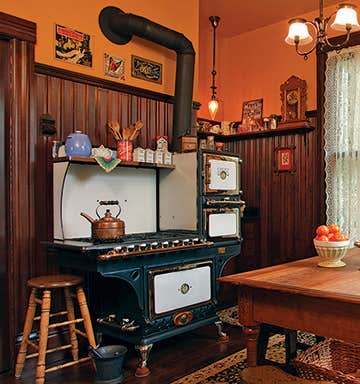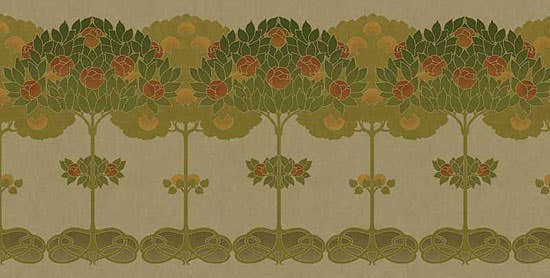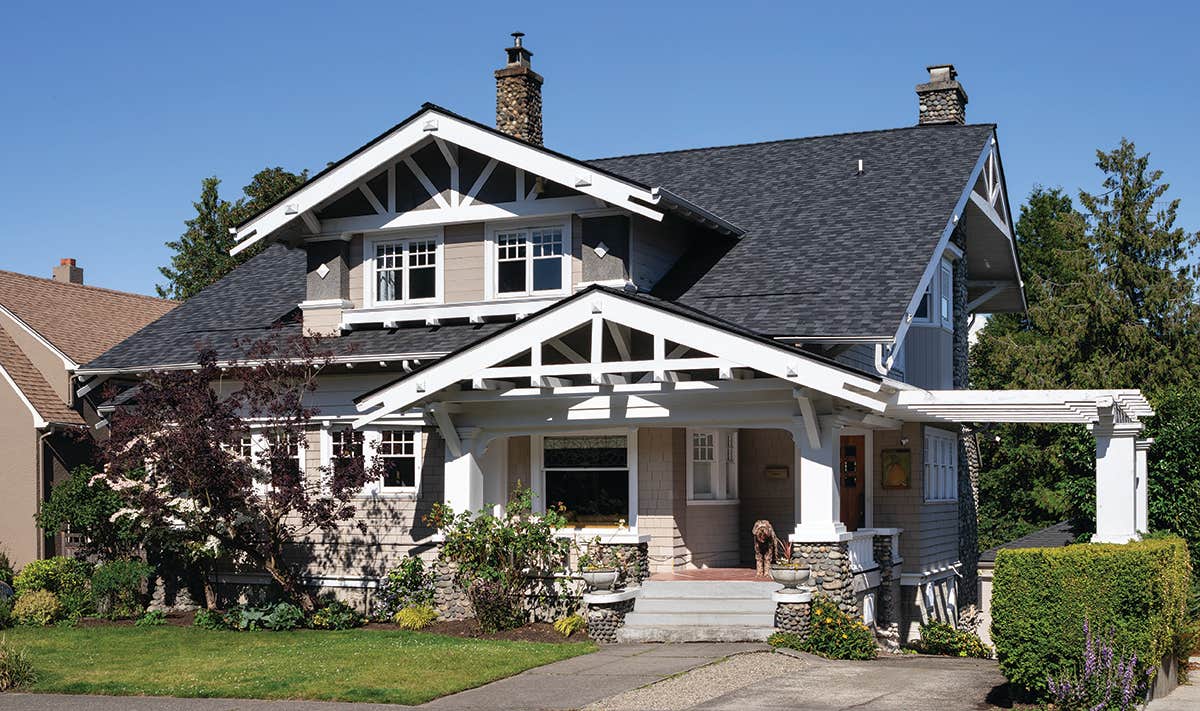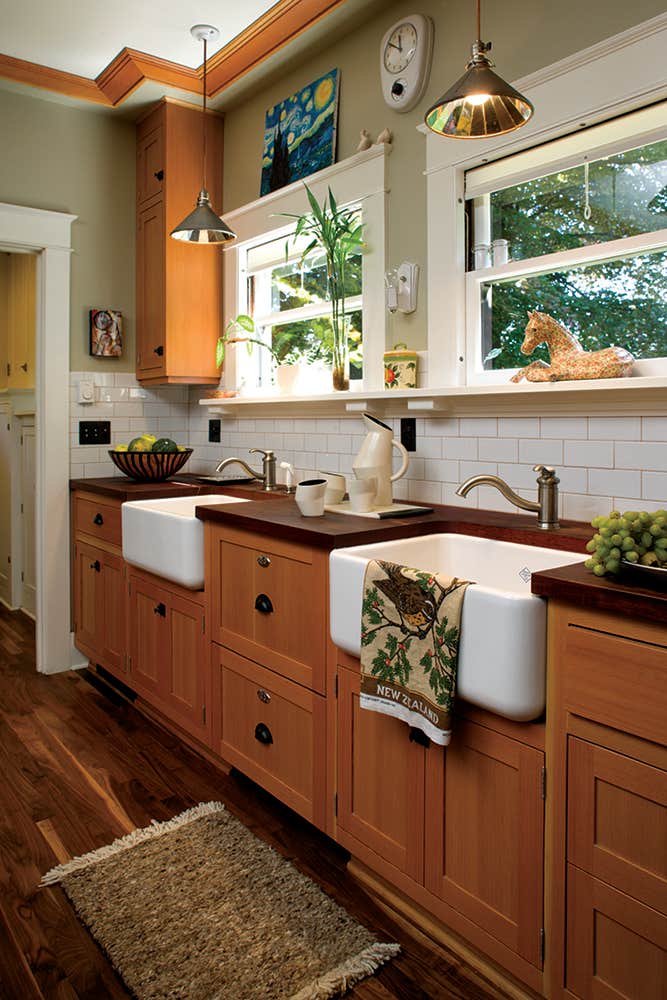The House that a Pottery Built
The founder of an important terra-cotta tile and pottery company built his retirement home in 1927. Decades later, it would take an Arts & Crafts collector to save the house.
When, in 1927, William Day Gates built his retirement home, in Crystal Lake, about 50 miles northwest of Chicago, he aptly named it “Trails End.” Gates, the founder and president of the American Terra Cotta & Ceramic Co., apparently used whatever materials were lying around at the factory. He lavishly applied tiles inside and out and even used packing materials in the structure of the house itself.
Gates’ Illinois company made architectural terra cotta for more than 8,000 buildings in the United States and Canada, among them the so-called “jewel-box” banks designed by Louis Sullivan, Chicago’s Carson Pirie Scott & Co. department store, buildings by Wright and by Purcell & Elmslie, and the Wrigley Building. His company also made Teco pottery.
It was therefore appropriate that, after Trails End had stood uninhabited and neglected, the house was discovered, in 2008, by a passionate collector of Arts & Crafts furniture and pottery—especially Teco pottery.
“I first worked with Tim Pearson when he hired me to restore the 1911 Frank Lloyd Wright Balch House, in Oak Park,” says Chicago-based architect John Eifler. “Tim, CFO of a construction firm, collected Teco; he was one of the few who saw this house’s value.”
“It was being sold as a tear-down,” says Julie Pearson. “Tim couldn’t get a mortgage because the house had no heat, no electricity; it was uninhabitable.”
Tim and Julie spent a decade restoring the house, living off-site for the first eight years. John Eifler headed up a project that stabilized the 2,200-square-foot structure; built a new roof; installed copper gutters; added a bathroom; turned two small bedrooms into a large primary suite; installed new electric, heating, cooling, and plumbing systems; and replaced a lot of rotted wood.
“The house had its original layout and many key elements were intact,” Eifler says. “The enormous living-room window and eyebrow windows remained. Much of the wood needed replacement, but most of the original glass survived. As for the living and dining rooms: they are a veritable terra-cotta catalog!” Gates had used his company’s colorful products for the vast living-room floor and the projecting mantel and surround, for pilasters and columns, to decorate outdoor elements including a small bridge, and as punctuation marks on the house’s exterior.
“The interior is full of tiles dating to 1923,” Eifler says. “But there’s more tile everywhere and three boxes of blue tile that was never used. Some of the technique is lost: For instance, when you fire clay, it shrinks a bit. So how did they create the columns between rooms? The columns are round, encased in tile, without gaps. We don’t know how they did that.
“The tile that depicts a landscape, over the fireplace mantel, is very valuable,” he continues. It has been conserved.
Eifler’s right hand was Jonathan Leck, a Minneapolis-based artisan who builds lighting fixtures; restores woodwork, stone, and tile; and has consulted in the restoration of several Frank Lloyd Wright houses, including the landmark Fallingwater.
Pearson’s furniture collection includes original Stickley settees and Morris chairs, fumed-oak bookcases with leaded glass, through-tenon lamp tables—and a live-edge table he himself built from a white oak that came down in a storm. It’s the backdrop for a singular collection of Teco pots, many in the signature Teco matte-green color.
Unfortunately, Tim Pearson passed away in 2020. His widow, Julie, lives at Trails End today. “It’s so fitting that his lifetime collection should be here,” she says. “The Teco came home.”
Regina Cole is an author and freelance writer for national and regional magazines on all aspects of architecture, interior design, landscape design, and yacht design. Cole specializes in historic architecture and period interiors.
Her work has appeared in a large number of publications, including the daily and Sunday Boston Globe, Interior Design, Old House Journal, Ocean Home, New Old House, Traditional Building, New England Home, Design New England, Maine Boats, Homes and Harbors, Forbes.com, and others.
She has been honored with a number of national writing prizes, including the Association for Garden Communicators Silver Award for a Magazine Article, the National Association of Real Estate Editors Silver Award for Best Residential Real Estate Story in a Daily Newspaper, and the National Association of Real Estate Editors Gold Award for the Best Architecture Story.
